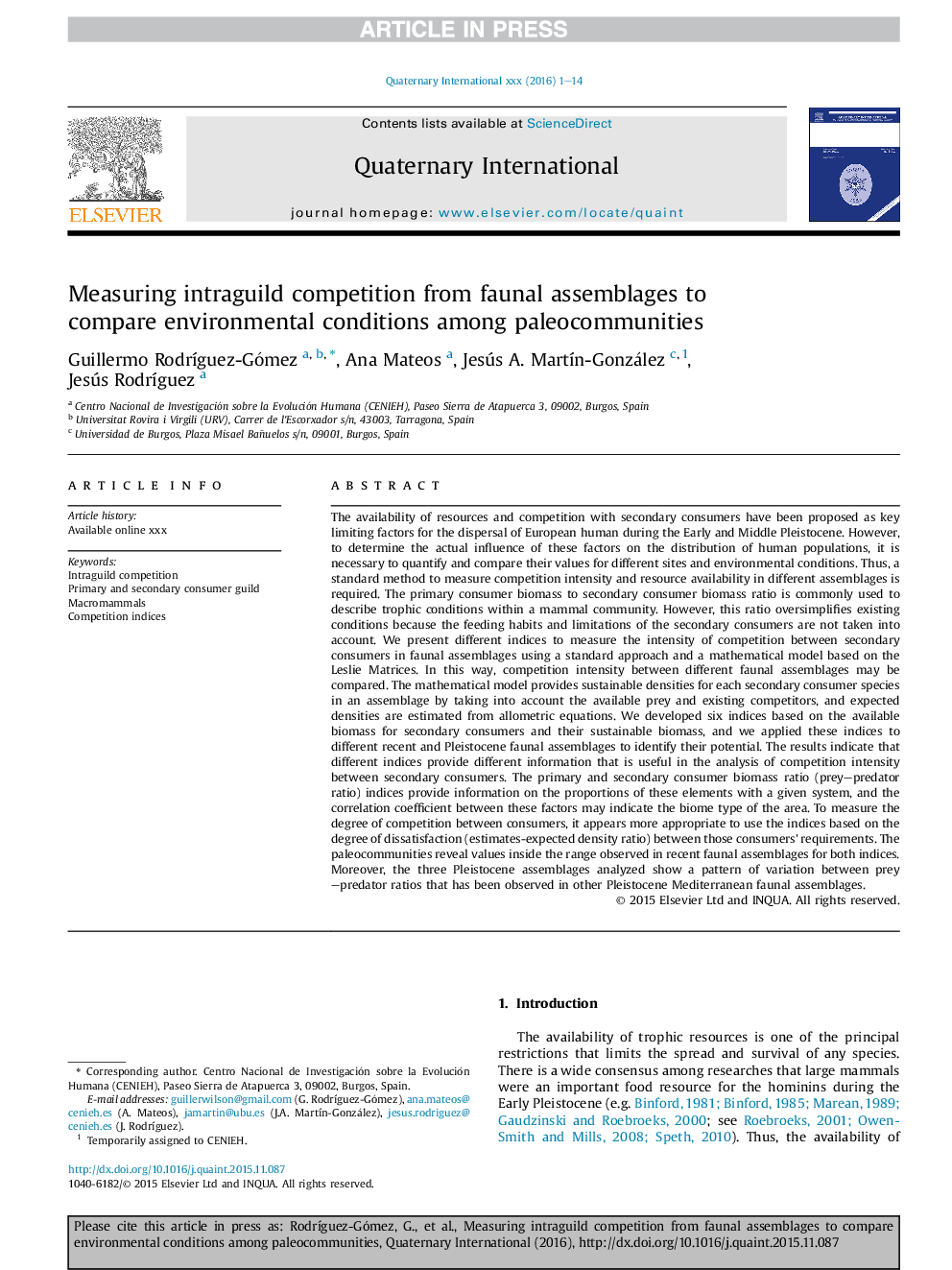| کد مقاله | کد نشریه | سال انتشار | مقاله انگلیسی | نسخه تمام متن |
|---|---|---|---|---|
| 5113621 | 1377942 | 2016 | 14 صفحه PDF | دانلود رایگان |
عنوان انگلیسی مقاله ISI
Measuring intraguild competition from faunal assemblages to compare environmental conditions among paleocommunities
ترجمه فارسی عنوان
اندازه گیری رقابت درونزا از مجموعه های فونتی برای مقایسه شرایط محیطی در بین محیط های پیلوتوکانته
دانلود مقاله + سفارش ترجمه
دانلود مقاله ISI انگلیسی
رایگان برای ایرانیان
موضوعات مرتبط
مهندسی و علوم پایه
علوم زمین و سیارات
زمین شناسی
چکیده انگلیسی
The availability of resources and competition with secondary consumers have been proposed as key limiting factors for the dispersal of European human during the Early and Middle Pleistocene. However, to determine the actual influence of these factors on the distribution of human populations, it is necessary to quantify and compare their values for different sites and environmental conditions. Thus, a standard method to measure competition intensity and resource availability in different assemblages is required. The primary consumer biomass to secondary consumer biomass ratio is commonly used to describe trophic conditions within a mammal community. However, this ratio oversimplifies existing conditions because the feeding habits and limitations of the secondary consumers are not taken into account. We present different indices to measure the intensity of competition between secondary consumers in faunal assemblages using a standard approach and a mathematical model based on the Leslie Matrices. In this way, competition intensity between different faunal assemblages may be compared. The mathematical model provides sustainable densities for each secondary consumer species in an assemblage by taking into account the available prey and existing competitors, and expected densities are estimated from allometric equations. We developed six indices based on the available biomass for secondary consumers and their sustainable biomass, and we applied these indices to different recent and Pleistocene faunal assemblages to identify their potential. The results indicate that different indices provide different information that is useful in the analysis of competition intensity between secondary consumers. The primary and secondary consumer biomass ratio (prey-predator ratio) indices provide information on the proportions of these elements with a given system, and the correlation coefficient between these factors may indicate the biome type of the area. To measure the degree of competition between consumers, it appears more appropriate to use the indices based on the degree of dissatisfaction (estimates-expected density ratio) between those consumers' requirements. The paleocommunities reveal values inside the range observed in recent faunal assemblages for both indices. Moreover, the three Pleistocene assemblages analyzed show a pattern of variation between prey-predator ratios that has been observed in other Pleistocene Mediterranean faunal assemblages.
ناشر
Database: Elsevier - ScienceDirect (ساینس دایرکت)
Journal: Quaternary International - Volume 413, Part B, 22 August 2016, Pages 55-68
Journal: Quaternary International - Volume 413, Part B, 22 August 2016, Pages 55-68
نویسندگان
Guillermo RodrÃguez-Gómez, Ana Mateos, Jesús A. MartÃn-González, Jesús RodrÃguez,
